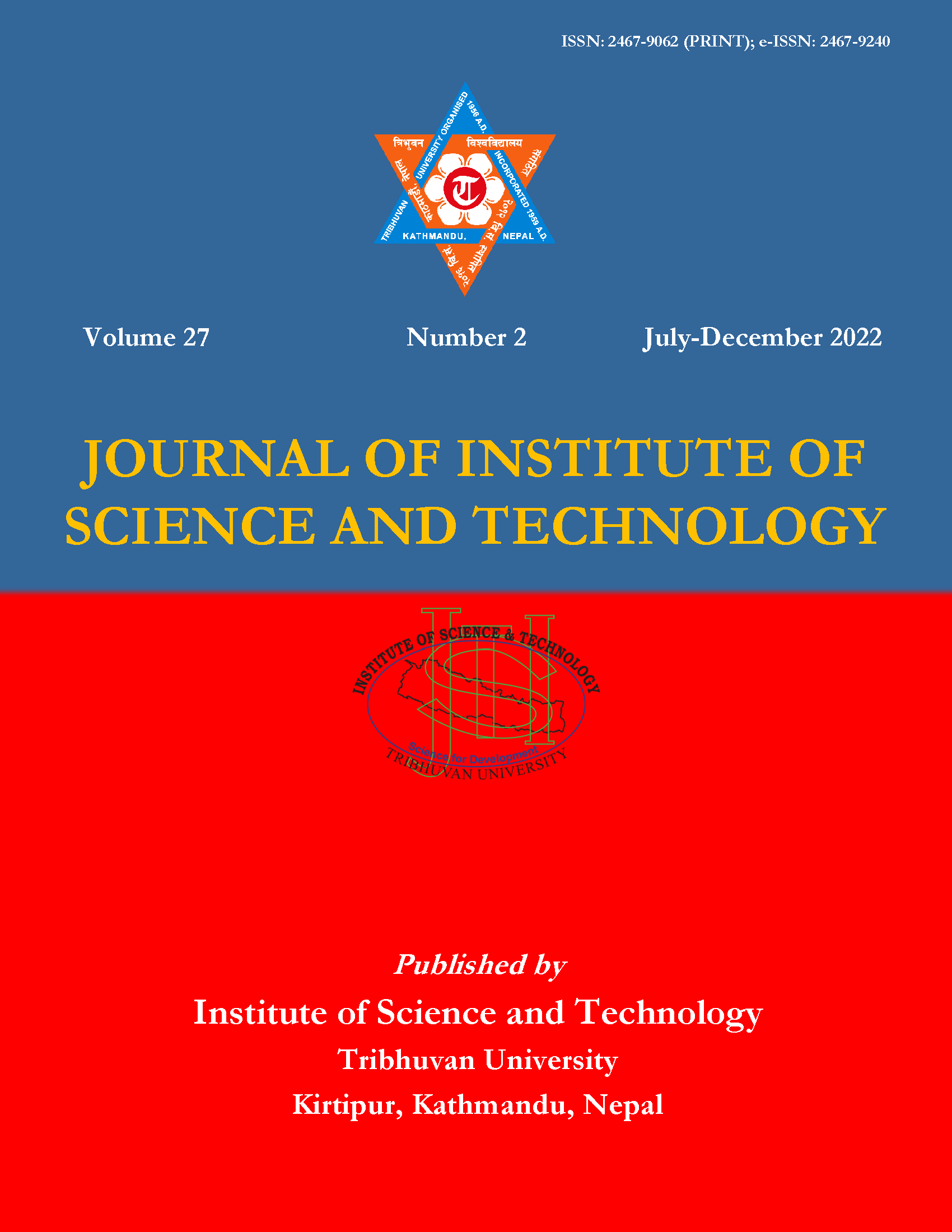Structural Parameter of a Merging Compact Dwarf Galaxy CG 0315
DOI:
https://doi.org/10.3126/jist.v27i2.35312Keywords:
Compact dwarf galaxy, Galaxy merger, Sersic index, half-light radiusAbstract
Structural parameters like size, Sersic index, total luminosity and ellipticity are important tools to study galaxy formation and evolution. This work studies a compact dwarf galaxy CG 0325, originated from a merger, and performs a detailed analysis of morphological parameters. The galaxy size is derived by using two different methods, i.e., parametric and non-parametric. The parametric uses the Sersic modeling, but it is found that the observed light profile of CG 0325 cannot be modeled with a simple Sersic function. This is, however, common in merging feature galaxies. Therefore, for further analysis, the half-light radius derived from the non-parametric method can be used as the size of the galaxy. CG 0315 is far more compact than a typical galaxy. We measured its effective radius of 4.05 arcseconds and half-light radius of 2.60 arcseconds that corresponds to a physical value of 221 parsec. Its ratio between the minor and major axis is 0.82, and the position angle is 179 degrees to the North. The star formation rate of the galaxy is 0.051Mʘ year-1. We conclude from these observational data that CG 0315 will continue to be a compact dwarf galaxy when star formation stops and transforms into a well-known compact elliptical galaxy. Therefore, CG 0315 might be a progenitor of an elliptical galaxy.
Downloads
Downloads
Published
How to Cite
Issue
Section
License
Copyright (c) 2022 Institute of Science and Technology, T.U.

This work is licensed under a Creative Commons Attribution-ShareAlike 4.0 International License.
The views and interpretations in this journal are those of the author(s). They are not attributable to the Institute of Science and Technology, T.U. and do not imply the expression of any opinion concerning the legal status of any country, territory, city, area of its authorities, or concerning the delimitation of its frontiers of boundaries.
The copyright of the articles is held by the Institute of Science and Technology, T.U.




